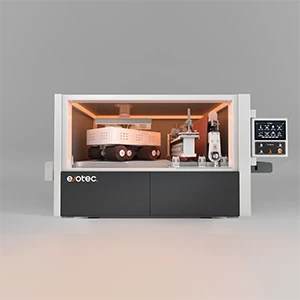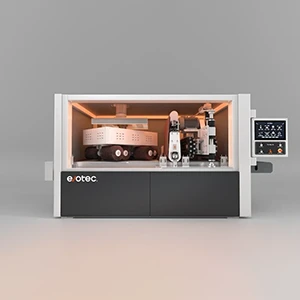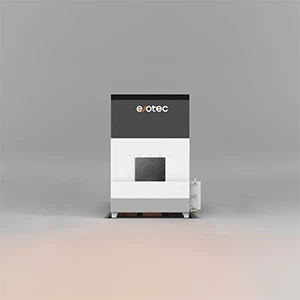The Advantages of Automated Deburring: Boosting Efficiency and Precision in Metal Fabrication
In today’s fast-paced manufacturing world, precision and consistency are everything. Every burr, rough edge, or uneven surface left after cutting can lead to safety hazards, coating defects, and costly rework. As fabrication demands grow, manual deburring can no longer keep up. Automated deburring systems have become the industry’s answer—delivering unmatched speed, accuracy, and repeatability. Backed by intelligent control and energy-efficient designs, these machines are transforming how sheet metal fabricators work and compete.

Key Takeaways
Why Burrs Are More Than a Surface Problem
Burrs—those small, sharp imperfections created during cutting, punching, or drilling—aren’t just visual flaws. They can compromise safety, reduce coating adhesion, and interfere with assembly. Traditional hand-finishing methods rely heavily on operator skill, often resulting in inconsistency and fatigue. By adopting automated deburring systems, manufacturers remove these limitations—achieving smoother edges, safer parts, and cleaner finishes in a fraction of the time.
What Is Automated Deburring?
Automated deburring uses motorized abrasive belts, rotating brushes, or sanding heads to remove burrs and refine edges automatically. Unlike manual grinding, these systems provide repeatable precision across every shift.
Advanced platforms such as Evotec’s EdgeX and Surfex series incorporate technologies including:
- AbrasiveSync Automated Control – Balances and compensates abrasives for consistent results.
- Parameta Smart Recall – Recalls stored process parameters for identical repeat runs.
- EvoFlow Conveyor System – Uses vacuum or magnetic retention to secure parts.
- GuardianSense Maintenance – Monitors system health and provides real-time alerts.
Together, these innovations ensure predictable, high-quality finishes—every pass, every time.
Manual vs. Automated Deburring
Manual deburring is slow, inconsistent, and highly labor-dependent. Automated systems, in contrast, deliver:
- Speed and Scalability – Up to 10× faster throughput.
- Consistency – Uniform results regardless of operator.
- Efficiency – Lower rework rates and cleaner downstream operations.
It’s a shift similar to the evolution from manual to robotic welding—automation raises output quality while freeing skilled workers for more value-added tasks.
Types of Deburring and Finishing Machines
- Wide-Belt Deburring Machines – For flat sheet metal parts and laser-cut panels.
- Brush Deburring Machines – Ideal for edge rounding and oxide removal.
- Vibratory Finishing Machines – Suitable for small or bulk parts.
- Integrated Systems (like EdgeX SDR) – Combine deburring, R2+ edge rounding, and surface finishing in one seamless process.
Core Advantages of Automated Deburring
1. Increased Efficiency
Automated systems handle multiple parts simultaneously, dramatically reducing cycle time and bottlenecks. A process that once took hours by hand can now be completed in minutes.
2. Reduced Labor Costs
Automation minimizes dependence on manual finishing. One operator can often manage several machines, helping fabricators combat skilled-labor shortages and lower operating expenses.
3. Enhanced Quality and Consistency
Each component receives identical treatment, improving coating adhesion, weld quality, and overall finish uniformity.
4. Lower Scrap and Rework Rates
With controlled abrasive pressure and repeatable parameters, automated machines prevent over-grinding and ensure precision—reducing scrap and rework costs.
5. Safer and Cleaner Work Environments
Modern systems integrate advanced dust extraction. Evotec’s Wet Extraction System achieves up to 99% dust removal efficiency, mitigating explosion risks and keeping the workspace cleaner and safer.
China’s Role in Global Deburring Technology
Chinese manufacturers have rapidly evolved from low-cost producers to technology leaders in automation. Evotec, backed by Ningqiang Group, combines robust engineering with intelligent software and strict quality standards. Today, “Made in China” deburring machines compete directly with leading global brands —offering European-grade performance with superior value and support.
FAQs
Q1. What industries benefit most from automated deburring?
A: Automotive, aerospace, energy, electronics, and general metal fabrication—all requiring precise edge finishing and high production volume.
Q2. How does a sheet metal deburring machine improve workflow?
A: It processes multiple parts continuously, eliminating manual rework and preparing surfaces for immediate coating or assembly.
Q3. Are Chinese-made deburring machines reliable?
A: Yes. Manufacturers like Evotec deliver globally certified machines that meet international safety and performance standards, supported by worldwide service networks.
Q4. Can automation reduce production costs?
A: Absolutely. Automated deburring can lower total labor and energy costs by up to 30%, while maintaining higher output quality.
Q5. Does automated deburring affect coating or welding quality?
A: Yes—positively. Rounded and polished edges improve paint adhesion and reduce stress concentration in welded joints.
In modern fabrication, efficiency defines competitiveness. Manual deburring can no longer meet the precision, consistency, and volume required by today’s markets. Automated deburring and edge-rounding systems empower manufacturers to produce cleaner parts faster, improve worker safety, and unlock higher profitability.
With Evotec Finishing Solutions, every surface is refined, every edge perfected, and every process simplified—delivering Efficiency That Empowers.








